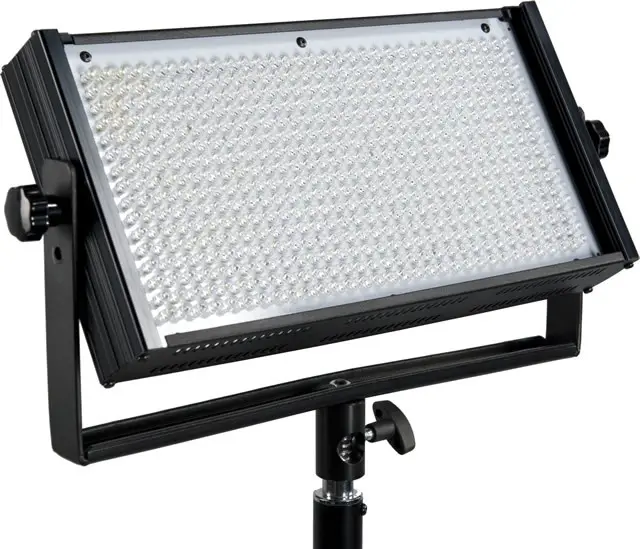
Tungsten

Tungsten
lights have been a video and film lighting mainstay for many years. A
tungsten filament, combined with halogen gas and enclosed within a
quartz envelope, produces a constant output and color temperature
throughout its life. They are affordable and produce large volumes of
very bright, high-contrast light, producing sharp, crisp shadows. Fortunately, light modifiers are available to control and soften tungsten’s brilliant beams as needed.
HMI

Another lighting option that is very
popular with professional video producers is the Hydrargyrum Medium-arc
Iodide lamp, or HMI. Unlike traditional lights, HMIs are daylight
balanced and produce a great deal more light than tungsten halogen
lights of the same wattage. For example, a 600W HMI produces as much
light output as a conventional 2000W unit with daylight filter and a
2500W HMI is equivalent to the output of 10,000W of traditional
tungsten. Requiring less power, they run much cooler, and like their
tungsten brethren, they can be modified to contain and direct all that
awesome brightness.
HMIs are considerably more expensive to buy
and maintain than conventional lights and each requires its own bulky
ballast to crank the voltage up into the necessary range. Once switched
on, they cannot be used immediately, as they require a bit of warm-up
time before reaching the correct color temperature.
Fluorescent
Fluorescents put out considerably less light than either tungsten or HMI lamps. Bank lights are available with multiple tubes and greater output but are larger, heavier and too bulky for easy travel. Newer designs, however, seek to resolve some of these issues. CFLs (compact fluorescent lamps) are daylight balanced and similar in size to common household light bulbs with the same screw-in base.
LED
LEDs are daylight balanced, consume low amounts of energy and are very cool to the touch. The diodes have extremely long life spans, rated in the tens of thousands of hours. On the one hand, they can be very compact, perfect for on-camera use or hard to light locations, such as lighting car interiors. On the other hand, they can be bundled together into large multi-panels for a cumulative effect. The intensity of LEDs can be varied, without altering the color temperature, while the color temperature itself can be independently changed between 3200K and 5600K.
The primary disadvantage of LEDs are their cost. And while their output is less than either tungsten or HMIs they may well offer the best of each world. They have the compact size and light weight of tungsten; the low power requirements, cool operating temperatures and longer life of fluorescents; lower cost than HMIs and, on some models, variable intensity and color temperature.
General Knowledge
Lighting Controls
Light modifiers have been mentioned throughout this article. Here are a few of them and their uses:
Barndoors - These attach to the front of the light fixture with two to four adjustable flaps for blocking the light from striking unwanted areas.
Flags - Non-reflective panels placed between light and subject to further prevent light from hitting unintended areas.
Reflectors - Highly reflective, light-bouncing panels for directing sunlight or lamplight, oftentimes to fill dark areas.
Umbrella - Similar to a traditional umbrella, these are attached to the light fixture to diffuse, or soften, the light output.
Softbox - A lightweight, collapsible housing, that fully encloses the light fixture. A diffuser panel at the front smooths and widens the light source.
Gels - Affixed in front of the light fixture (often with a frame) for color correction in mixed light situations, to diffuse or reduce light output or simply add a bit of color to the scene.
Gobos/Cookies - Any number of objects placed in front of the light source to cast shadows onto the scene or textures onto a plain backdrop.




No comments:
Post a Comment